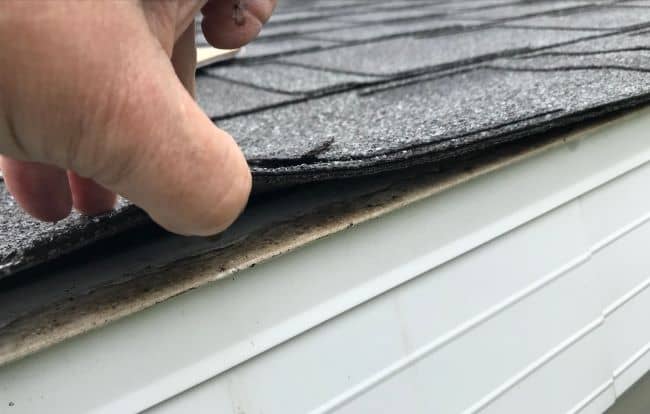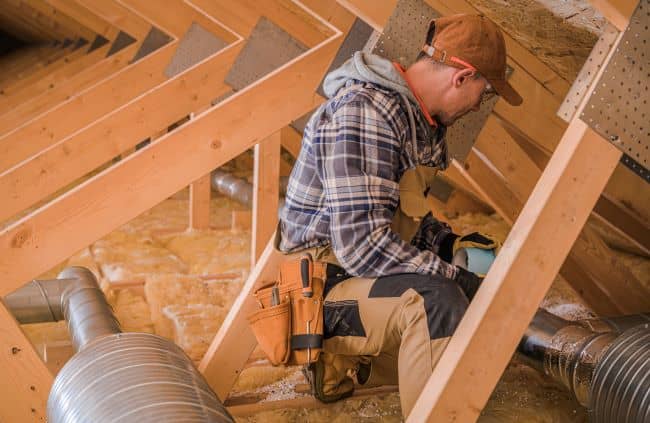How To Get Your Roof Ready for Winter
In the icy winter months, your roof protects and insulates your house. By fall, you should have strategies to protect your roof for the winter season. With the proper maintenance, your roof’s lifespan could be extended, and it can be safeguarded from severe damage. The following guidance will assist you in putting your roof in shape for an impending winter storm.
Check The Edges Of Your Roof
The edges of the roof may incur structural damage as a result of ice dams that occur during the cold winter months. To prevent the edges of the roof from being damaged by the cold weather, you should consider installing a proper ventilation system. Check the roof edges for any pitch alterations and see if you need a new cover. Metal fasteners are wrapped around the roof’s edge.
To determine whether you need a roof cover, look for variable heights or convex or concave shapes at the boundaries of your roof. If you notice odd shapes around the roof’s edges, you need to install roof strips to solve the issue. Additionally, covering helps prevent the wood around the roof’s edges from rotting or leaking. If your cover already has dents or holes, you will need to either replace it or reseal it. Make sure you at least inspect the roof at least once a year.
Clean Your Gutters
Gutters are essential to the home and the roof. Cleaning them is a critical stage in the process of preparing your roof for winter. Many problems can arise from clogged gutters and dirt accumulation at any time of the year, especially in the winter. The gutter’s primary function is to divert rain and the subsequent melting of snow off the roof and the house.
You could incur severe damage if this functionality were to be interrupted or stopped for any reason. Pooling water on the roof could result in leakage and floods inside the house. Additionally, the chances of ice dams accumulating on your roof throughout the winter will significantly grow.
You can avoid many of these problems or significantly minimize them by early and routine gutter cleaning. We suggest you carry this at least twice a year in the fall and right before the snowfall in the winter. You can also seek professional assistance.
However, most home homeowners choose to do it themselves. Get rid of things like leaves, twigs, branches, and other debris. Furthermore, ensure that everything is firmly attached because dangling gutters could cause water spills. You can also install gutter guards to reduce the amount of dirt on your gutters.
Trim Trees and Hanging Branches
Trees provide additional cooling in the summer, but they can cause severe damage to your roofs due to strong winds and winter storms. The branches could scratch the shingles and damage the roof. When debris from trees like fruits, leaves, or twigs falls on your roof, mould may begin to form.
Before trimming or removing the branches that hang from the tree, consult your arborist. Experts in this industry are familiar with the local logging regulations and may provide environment-conscious protection for your home.
In general, any branch that hangs from the roof should be cut. If you need to remove more than 25% of the tree, you should get rid of it. Additionally, young trees can be trimmed to reduce further development. If branches, leaves, or twigs got tossed onto the roof during a previous storm, you should remove them.
Check Your Shingles
After cleaning your gutters and roof, you will know how your roof is doing. If you discover water damage or shingle cracks, you will need to replace the shingles or the roof. Before the snow and severe winter approach, you can contact a reputable company to help inspect the roof before it is too late.
It is recommended to schedule shingles checks twice a year. To safeguard the roof warranty, keep a record of every roof inspection. You may need a new roof if your current one is more than 15 years old or if the shingles are missing or broken.
Examine Your Roof Flashing
Flashing is another important component of your roof. It helps avoid leaks. Due to floods, issues with it could cause significant damage to your home. Flashing is made of impermeable materials like aluminium or galvanized metal. It acts as an additional layer of defence, diverts rainfall away from the roof, and prevents it from infiltrating the house’s construction.
Flashing is noticeable everywhere, including on all joints, the border of the skylight, the point where the chimney joins the roof, and along the roof intersection. Subzero winter temperatures, rain, intense storms, and winds can cause the edges to crack, loosen, corrode, or lift.
To avoid significant damage and costly winter leak issues, you are strongly advised to examine all connections to ensure everything on your roof is in working order. Consult a skilled roofing expert to ensure all parts are correctly and firmly sealed. Consider replacing any component that is damaged or missing right away.
Check Roof Valleys
The valleys on your roof are susceptible to deterioration. Maintaining these areas free of debris buildup can reduce the weight that gathers in valleys and help avoid excessive wear and strain on your roof.
Check For Animals Living On your Roof
Your home could unknowingly be invaded by creatures through damaged roofs. Throughout the chilly winter months, look for animals hiding in your chimneys. If you hear scraping or buzzing on the walls, there may be animals on the roof or in the attic. Regularly inspect your roof to prevent them from reproducing inside your home.
Before covering any holes or cracks on the roof, check for things like bird nests and animals scurrying around the attic. Also, cover your outdoor trash to prevent unpleasant bugs from skulking around your yard.
Inspect Your Attic and Install Ventilation Systems
As part of preparing for winter, you should carry out roof and attic inspections. If your attic is not adequately ventilated or insulated, heat will escape from the house, and cold air will penetrate. This costs so much energy and resources and demands more significant heating.
As the heat from the attic melts the snow, it can also round the shingles and leads to the formation of ice dams on the roof. So, you should ensure your attic has enough insulation or, at the very least, a ventilation system that will allow air to flow.
Hire Professionals
The preferred technique to get your roof ready for the winter is to work with a reliable company. Professional contractors are aware of the roof maintenance procedures and what to do in the event of damage.
Experienced roofers can get rid of pesky intruders like rats and other creatures. This is because they are aware of the signs to look for. Through these professionals, you can learn how to examine your house’s interior and exterior and gauge the stability of your roof.
Conclusion
Perth winters are troubling times. The listed guidelines will come in handy as you prepare your roof for winter here in Perth. Remember to prioritize roof inspections and make the necessary repairs before the storm hits. With good roof preparation, you can relax peacefully in inclement weather.



